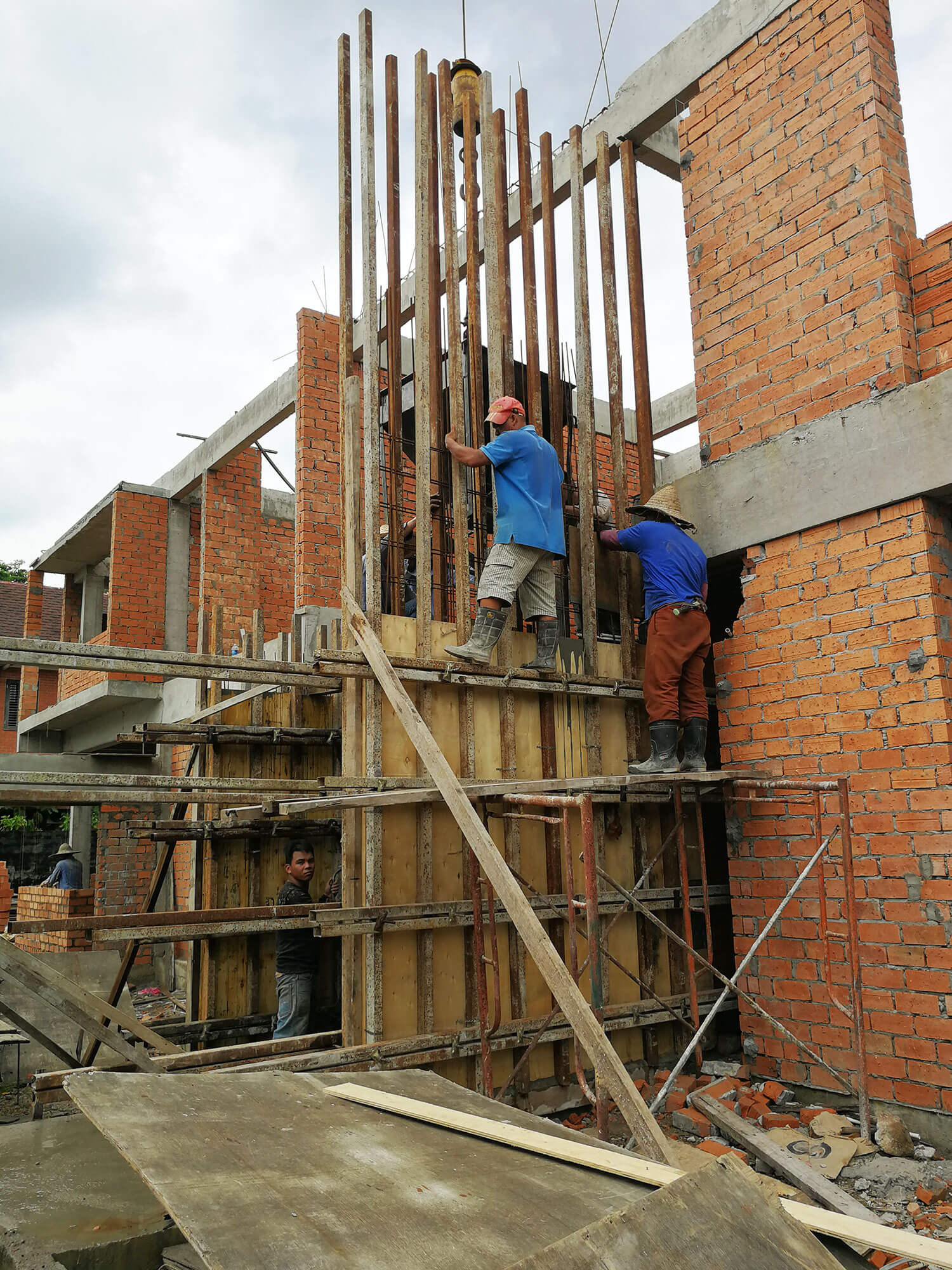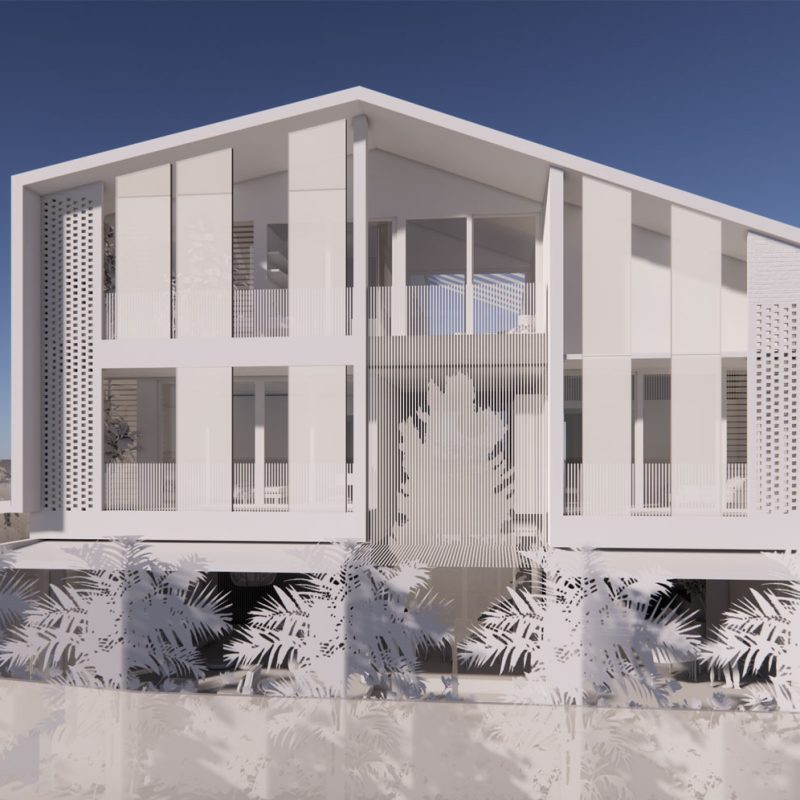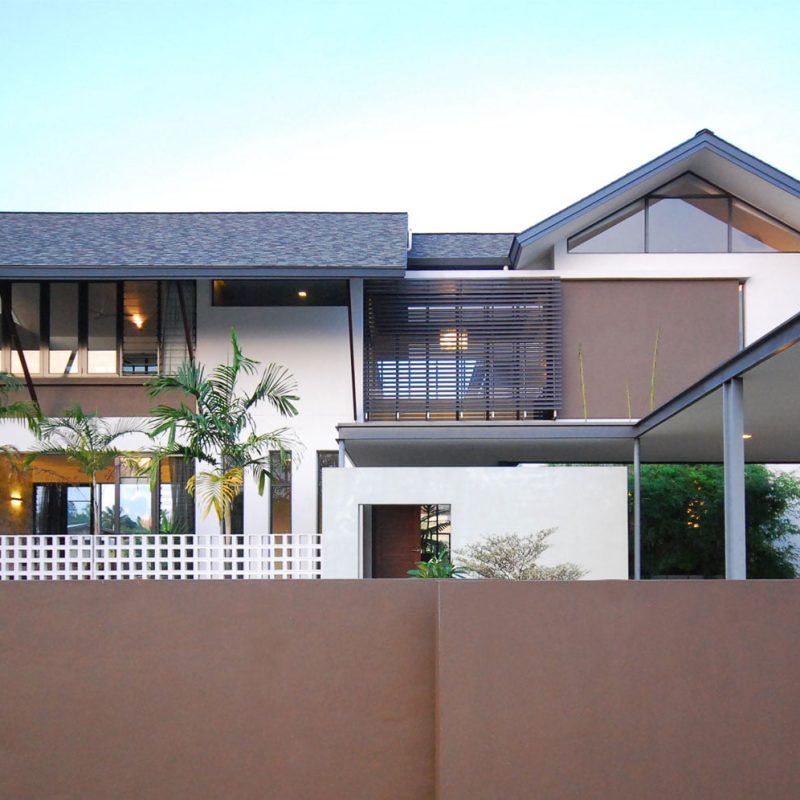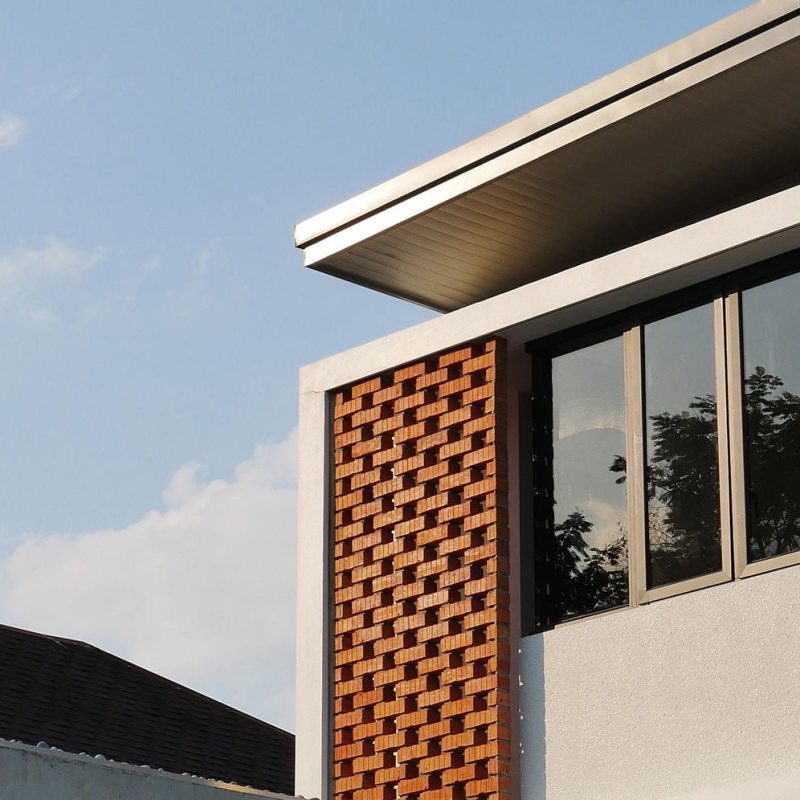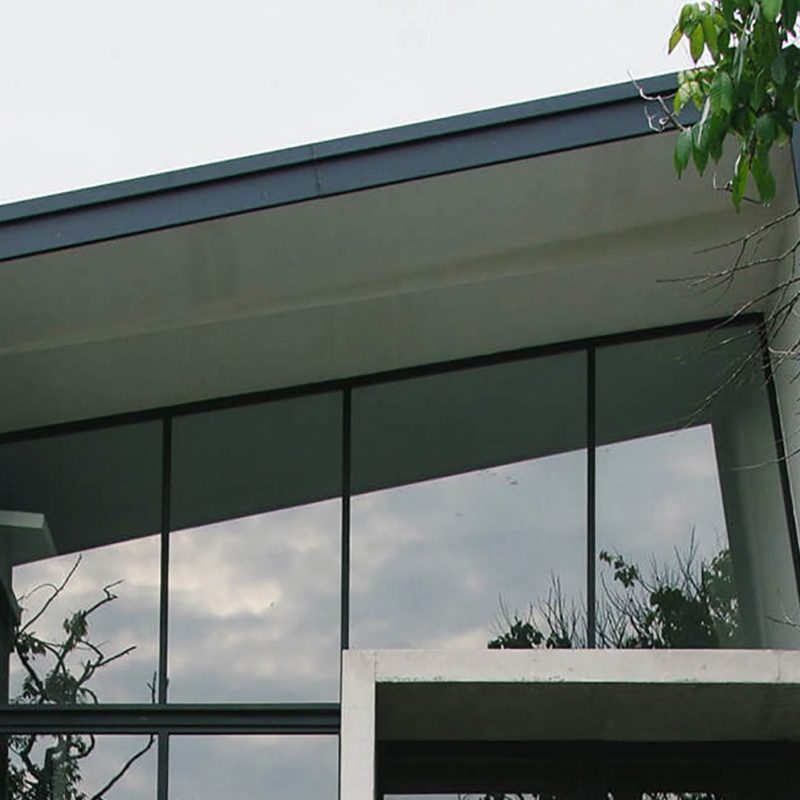Location
- Malaysia
City
- Kuching | Sarawak
Duration
- 2016 – 2020
Client
- Alron Tham and Alexis Yap
Surface
- Site area
- : 0.6 acre
- Building area
- : 400 m2
- Building height
- : 2 storeys
Status
- Completed
Project Type
- Residential
Themes
- Single Residential
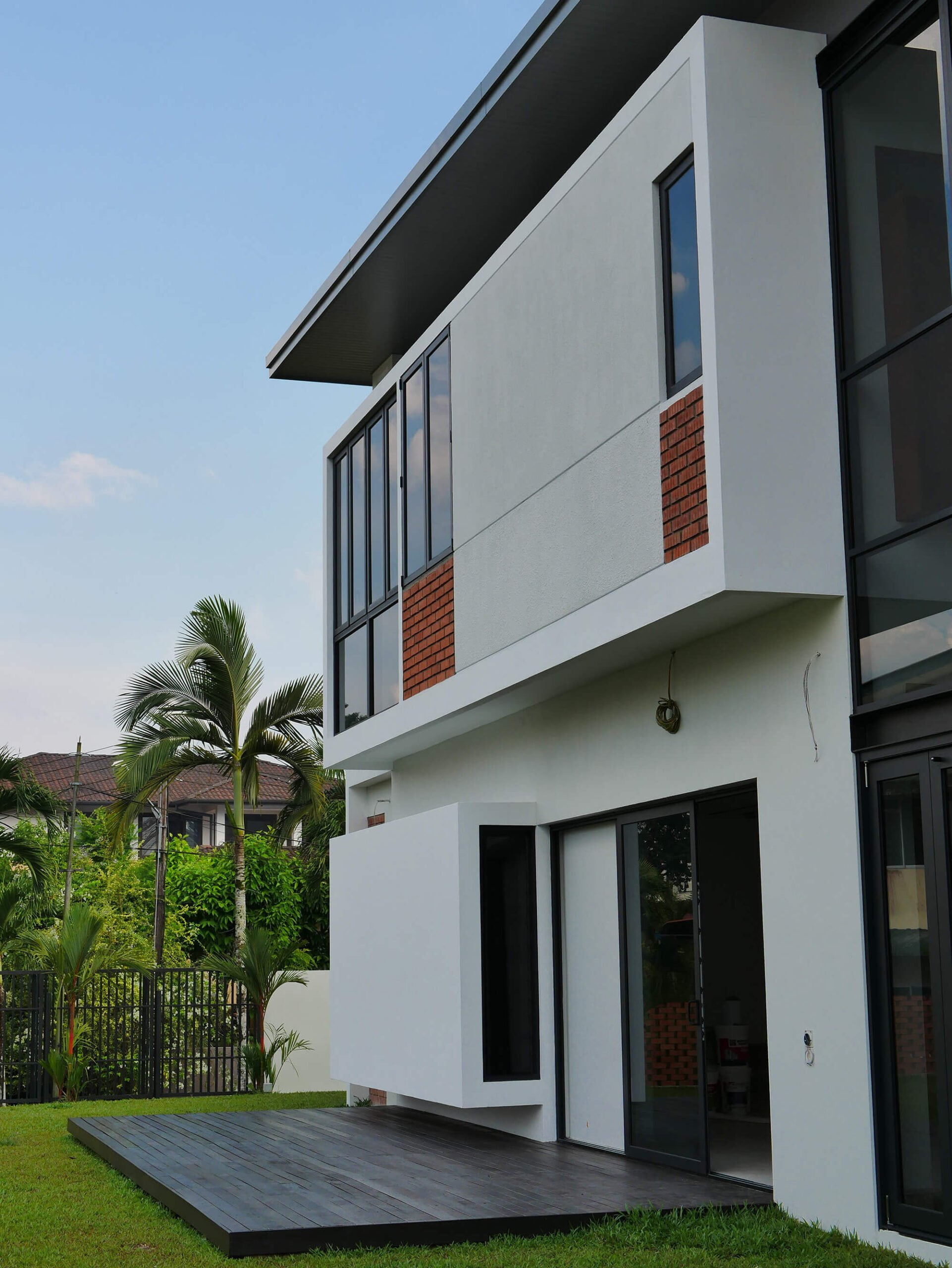
The site is on a hillock at the end of a cul-de-sac of detached houses, providing a view of Kuching to the north, with road access from the South boundary. The client had a pre-determined layout in mind and required a single pitched roof over the house. This resulted in a potentially blocky form for the house, which we countered with several design strategies:
- We designed the external structure as extensions of the house – the entrance and service linkways were constructed in off-form concrete, similar to the main building.
- The roots of the car ports are detailed in steel, like the main roof, forming a series of pavilions with the house.
- The home was raised on a platform about 750 mm higher than the entry driveway and car ports to reduce the blocky massing.
- Internally, the spaces are a mix of double and single-height volumes, providing a varied spatial experience as one moves through the house.
- We made sure that all the rooms in the house had a view of the garden. We achieved this through the use of corridors, which look into the double-height dining room and entry hallway, and the introduction of internal ‘peek-a-boo’ windows in the upstairs bedrooms.
- Lastly, we articulated the facades by recessing the window bays to protect from the weather and to cast shadows. We used face brick and texture paint to add tactility to an otherwise boxy form.
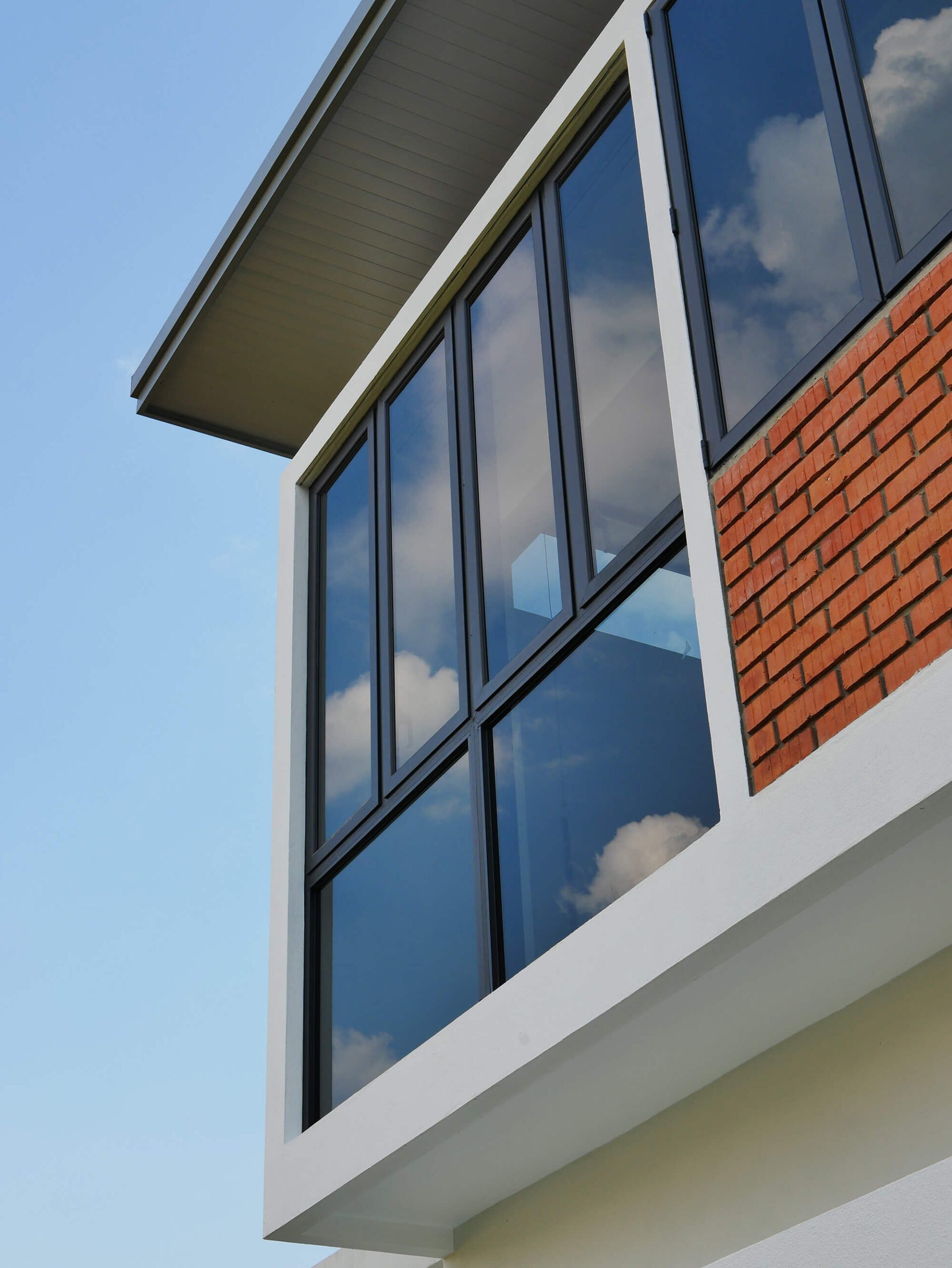
The floor plan is dominated by a central corridor, to which the rooms and spaces are attached. To add interest to the spatial experience, the spaces are sometimes double height, allowing views between floors, as well as daylight and air to filter through the house. Rooms are also designed to be multi-use; play areas are easily converted into bedrooms/study by simply sliding shut the glazed panels.
The main spaces of the house face north towards the Kuching skyline, overlooking a large expanse of lawn. The expansive lawn is the result of a retaining structure at the north boundary of the site. Otherwise, the site slopes away from the house, offering another type of garden. A small set of steps from the lawn leads to the under-croft of the retaining structure.
The material palette is deliberately quite limited to examine how brick can be portrayed in several characters: as a rendered wall – with paint, with textured spray and paint, as itself bare-faced in bearer bond formation, or gently teased apart as a ‘brick-lace’ vented screen.
Aluminium is used as framing for the glazing, as well as screens for air-con units or patterned as a fence with steel framing. Steel serves as the structure or gentle ‘strings’ supporting a series of timber stair treads. The robust and delicate concrete is exposed to frame the entry walkway and hall wall, showing traces of the timber that formed its shape, or concealed beneath the lawn to extend the garden by several meters.
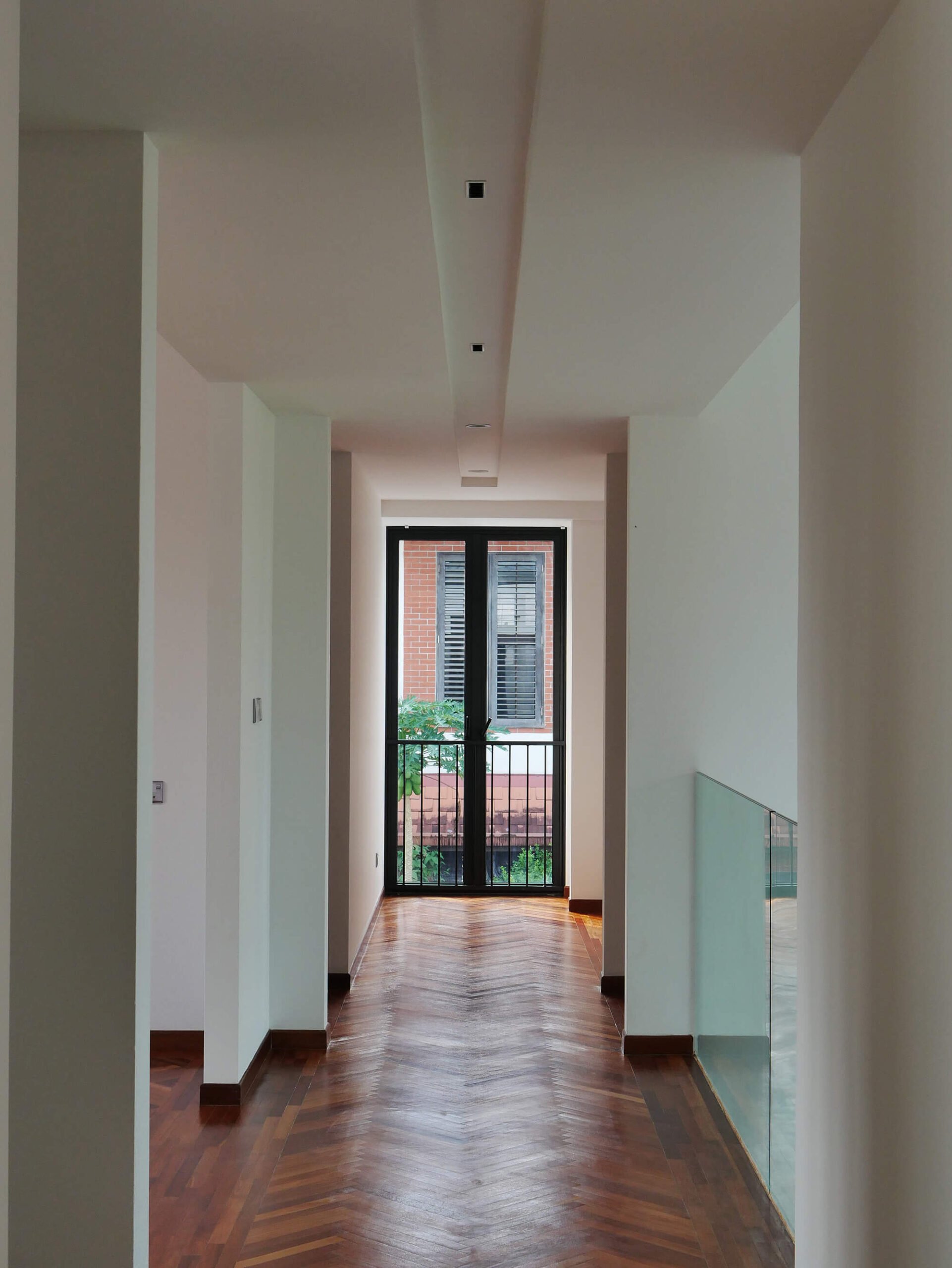
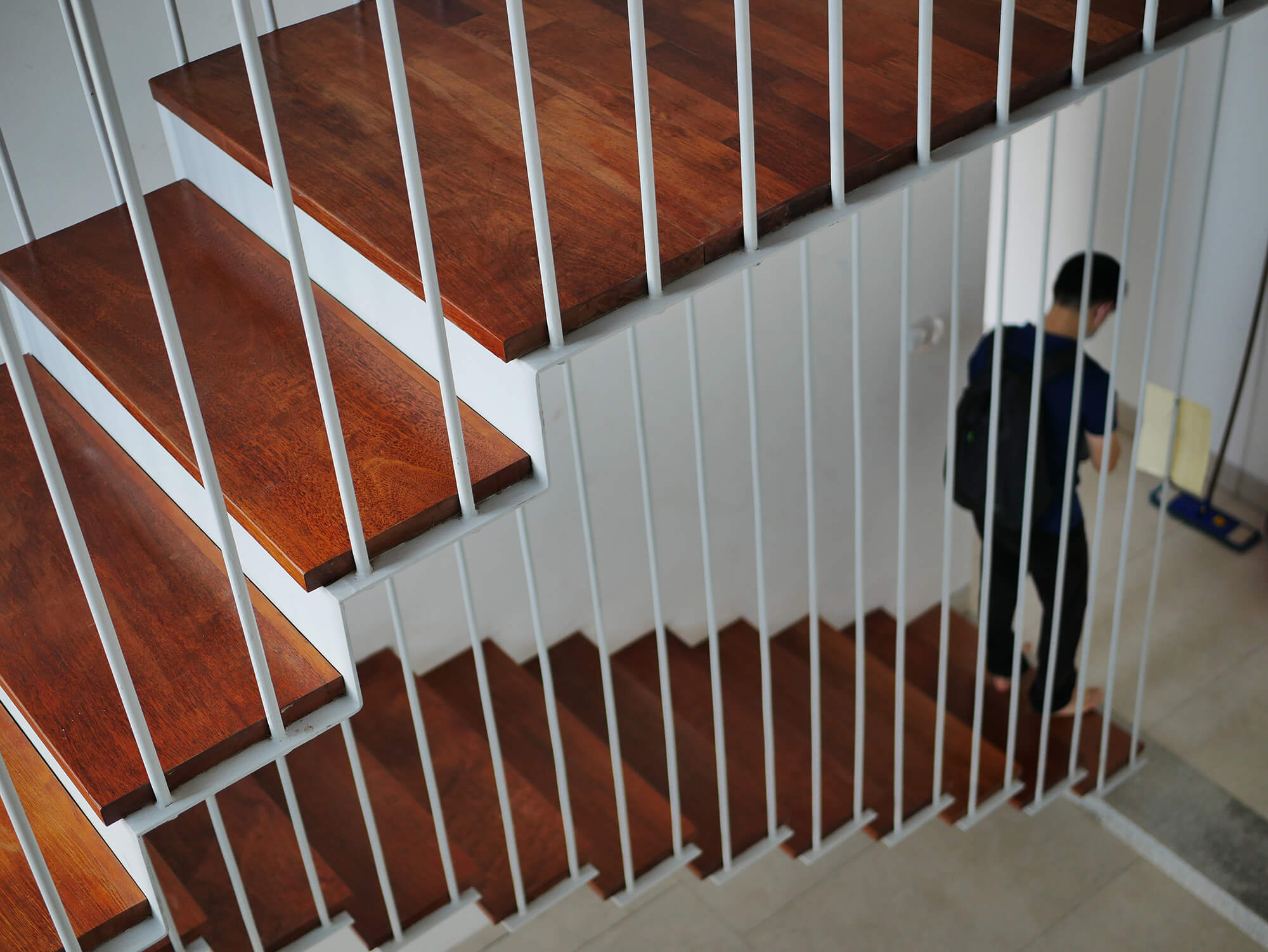
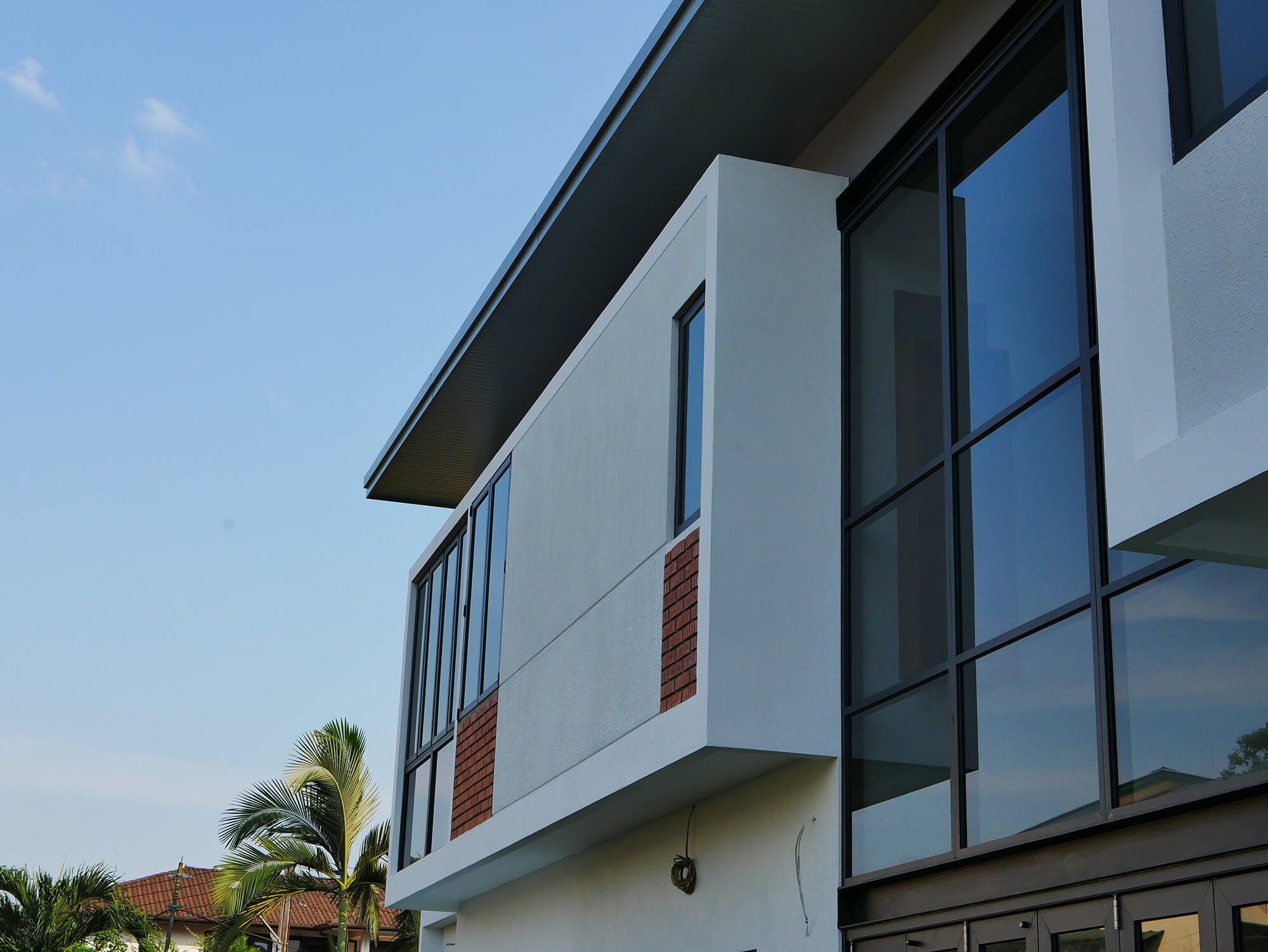
The construction of this house ran overtime due to COVID-19. We struggled to complete it when manpower was affected due to travel restrictions between zones. Later, there was a separate struggle to obtain permits for occupancy when authorities were working at half-strength. The owners finally occupied the house in 2020, and we started another project with the builder and client shortly after.
Team Credits
Architect
- MinWee Architect
Engineer
- C & S : Prime Builders Consult
Contractor
- Liew Kuet Chen
Design Team
- Wee Hii Min
- Tan Sher Lin
- Melvin Chan
- Chan Lek Heng
Photography
- Sean Wee
- Melvin Chan
Share our project
